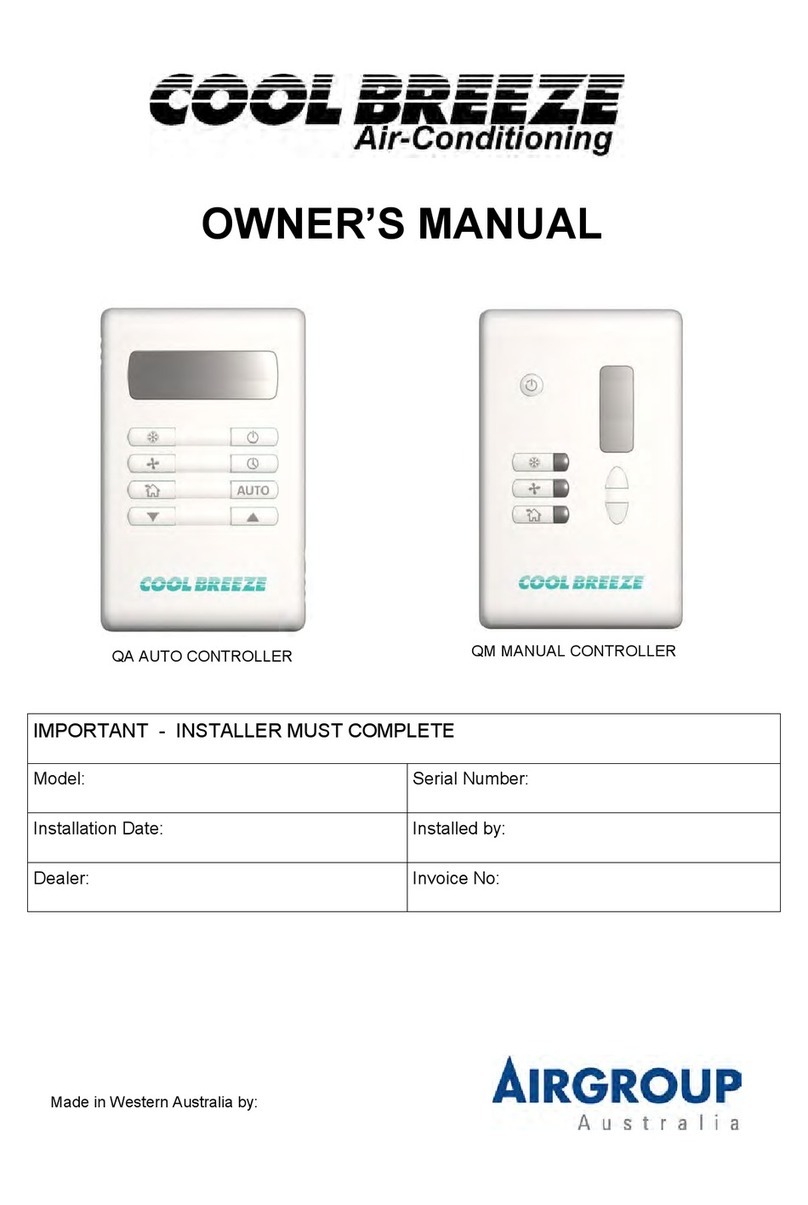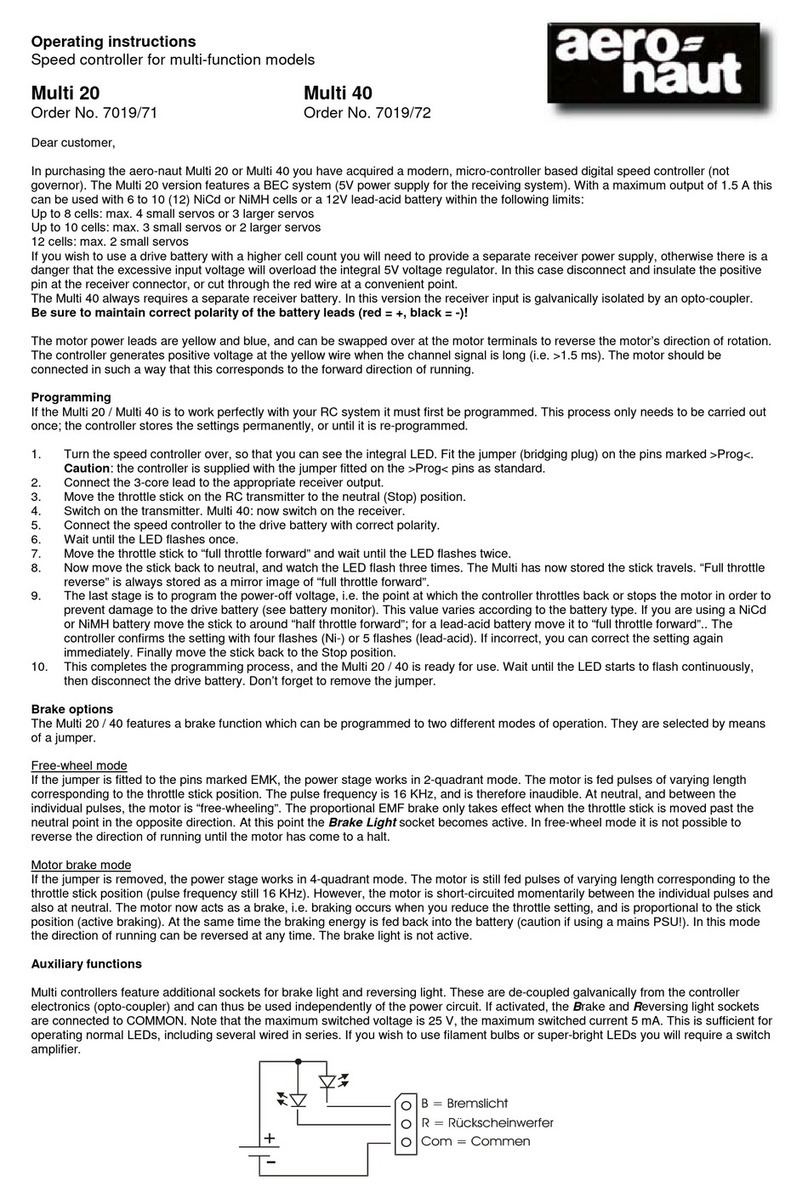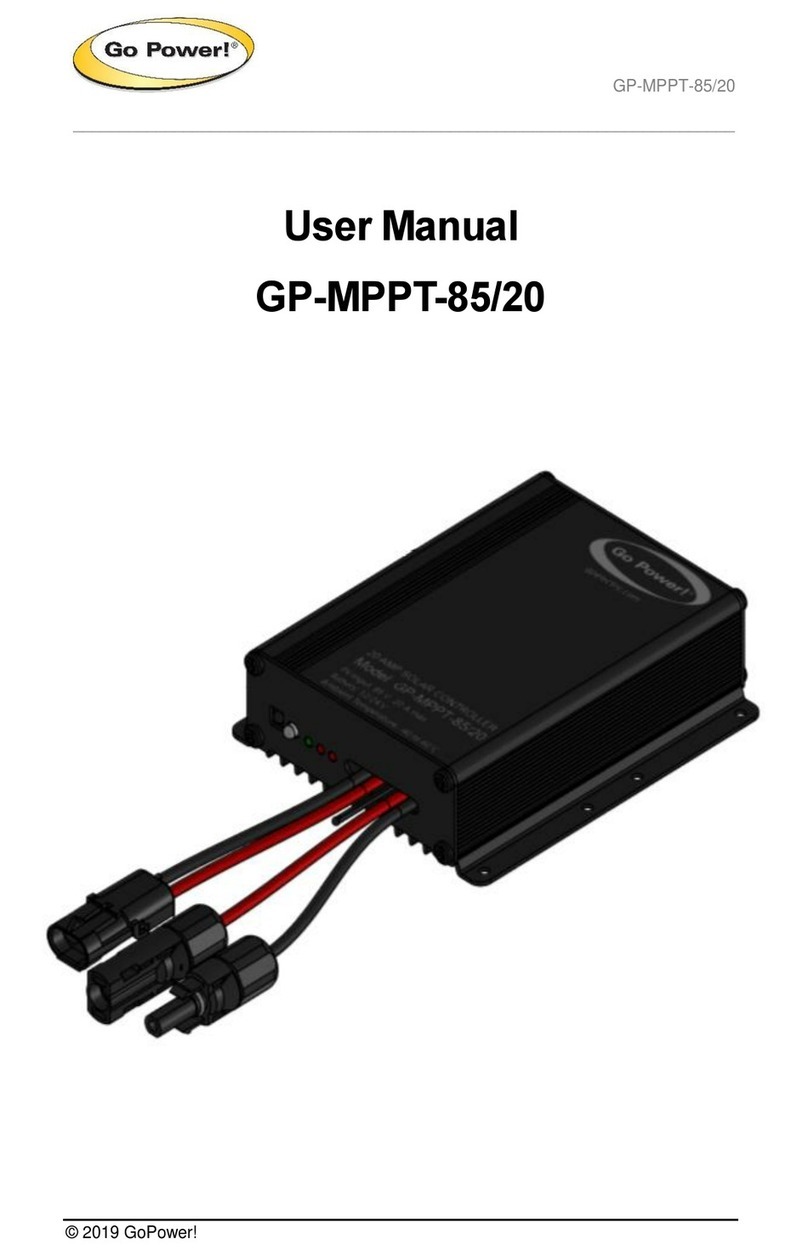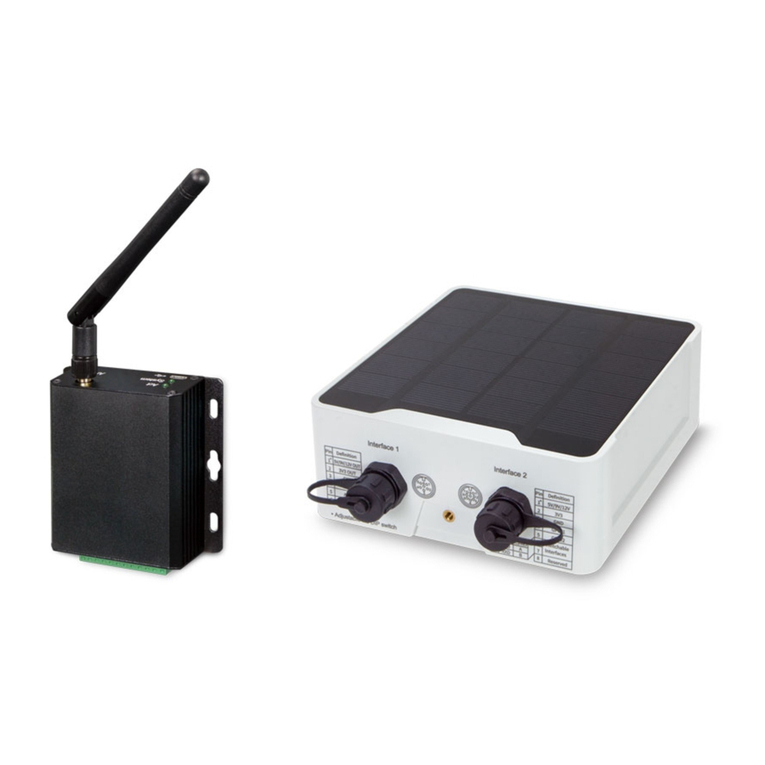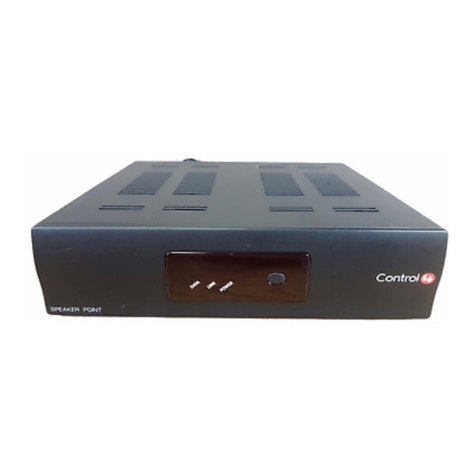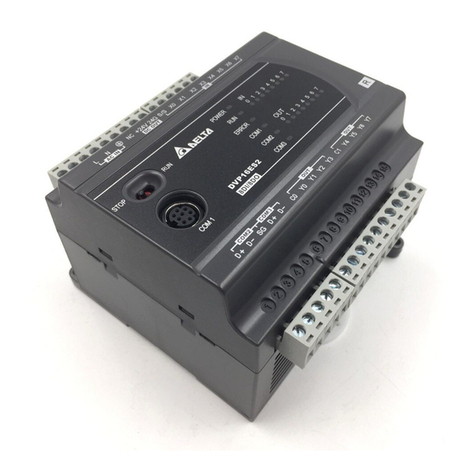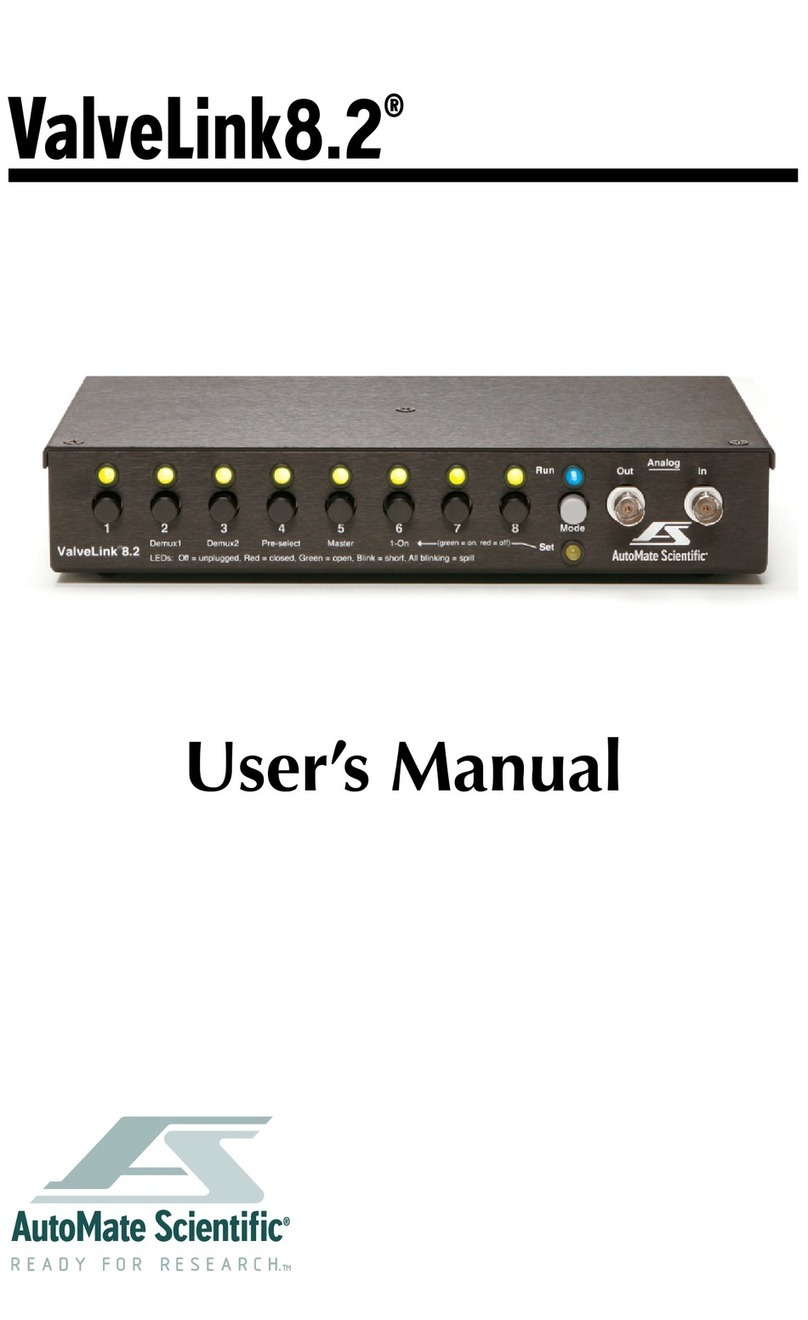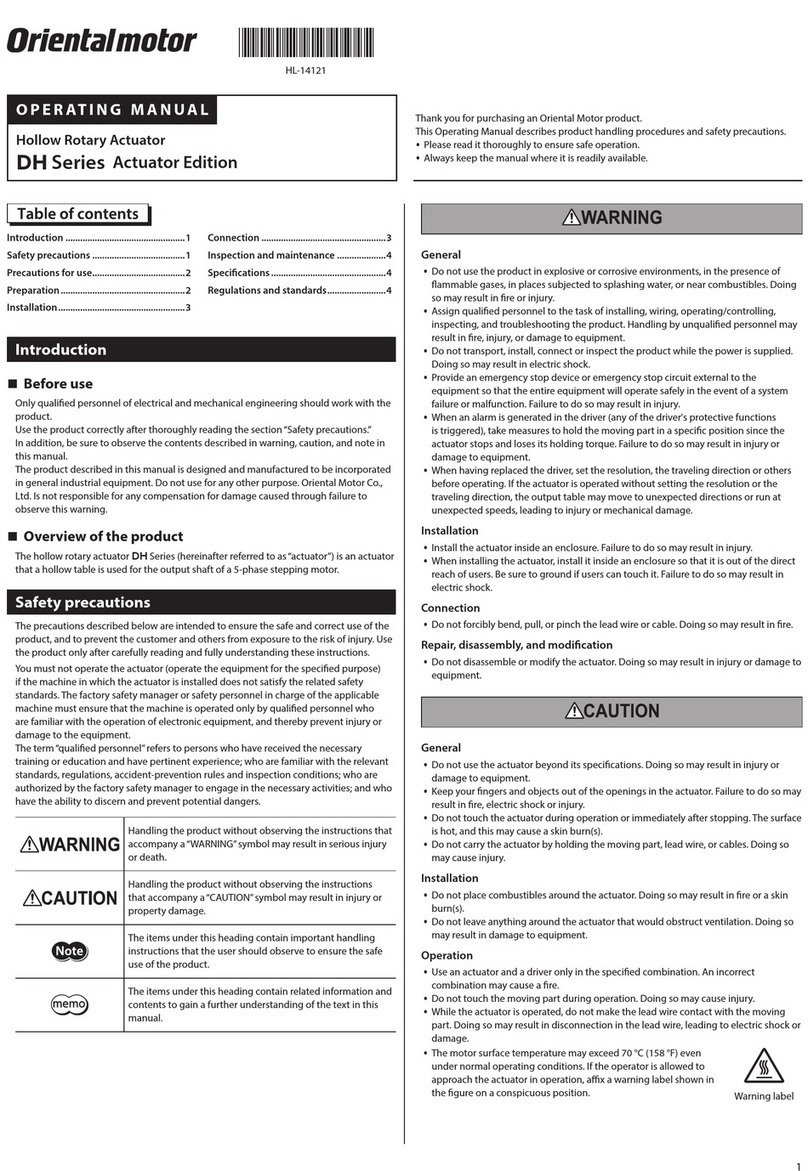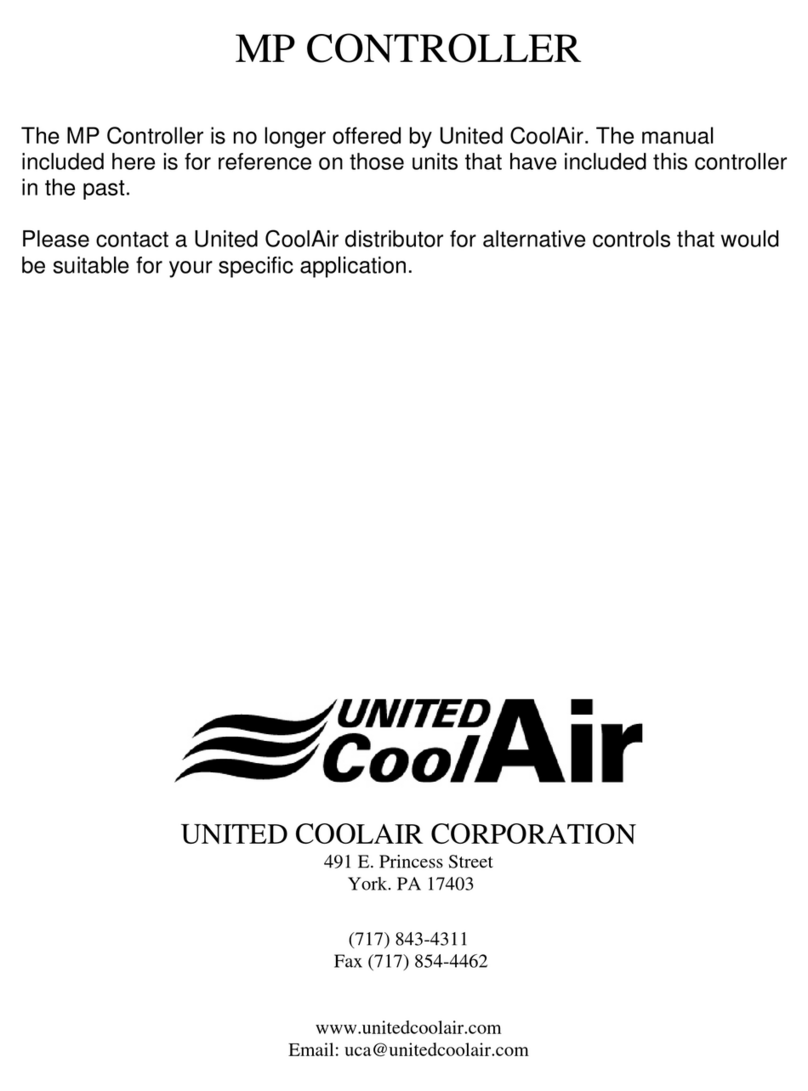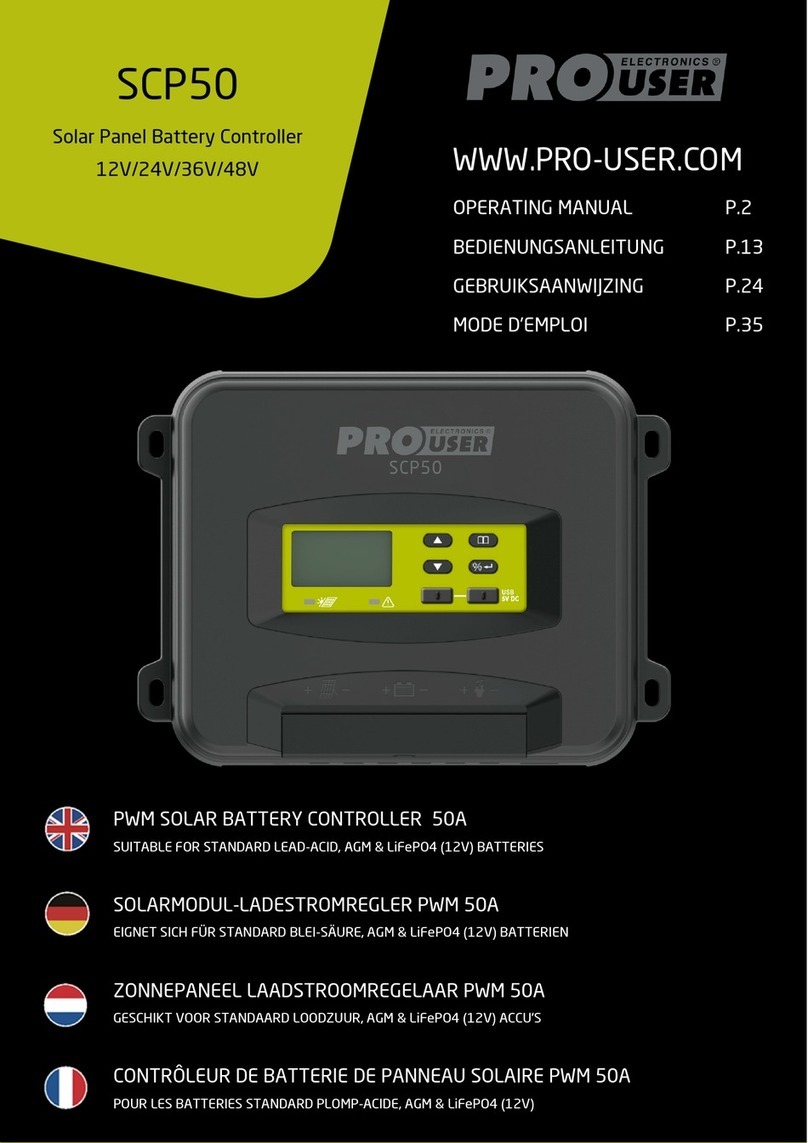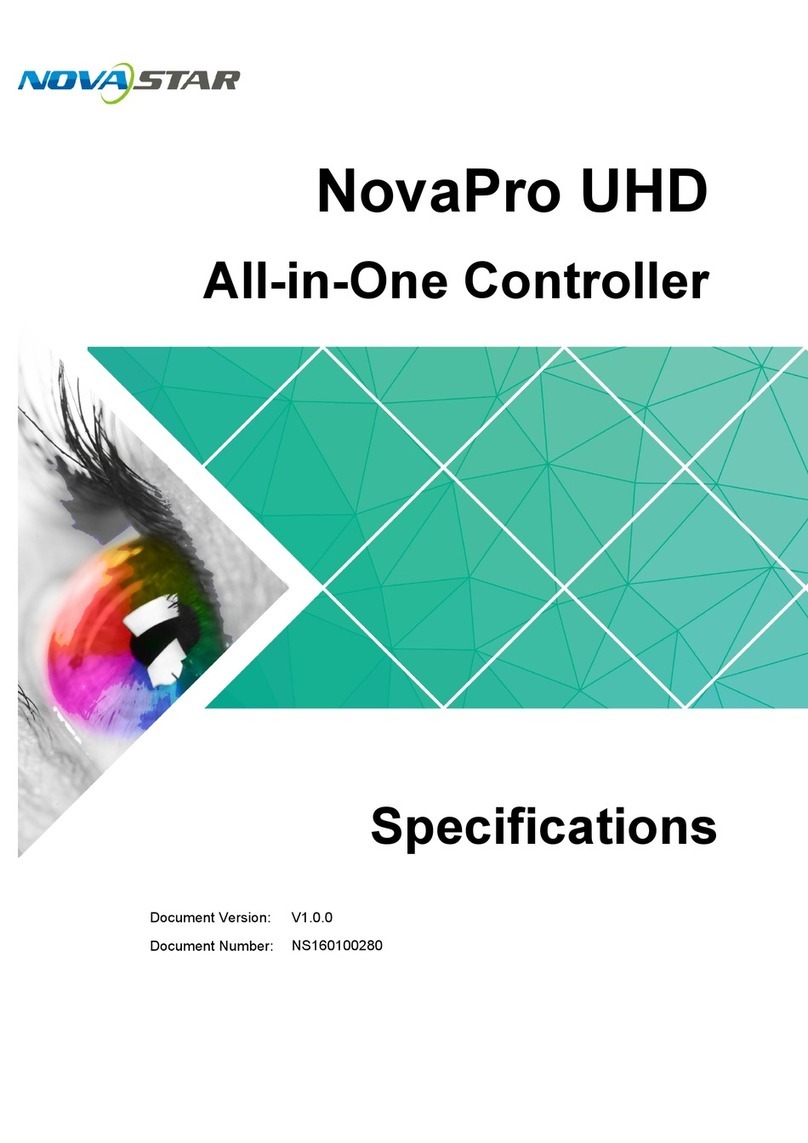delta-mobrey DMCU800 Guide

www.delta-mobrey.com
IOM-DMCU800 Rev. A: Oct 2022
Installation, Operation &
Maintenance Instructions
Programmable Controller
Model DMCU800
SAFETY INSTRUCTIONS
Informaon ..points out useful ps,
recommendaons and informaon for
ecient and trouble-free operaon.
CAUTION! ..indicates a potenally dangerous
situaon that can result in light injuries
or damage to equipment or the
environment, if not avoided.
WARNING! ..indicates a potenally dangerous
situaon that can result in serious injury
or death, if not avoided.
WARNING!..idenes hazards caused by electric
power. Should the safety instrucons
not be observed, there is a risk of
serious or fatal injury.
WARNING! ..indicates a potenally dangerous
situaon that can result in burns, caused
by hot surfaces or liquids, if not avoided.
WARNING! ..indicates a potenally dangerous
situaon in the hazardous area that can
result in serious injury or death, if not
avoided.
Ex applicaons ..special instrucons for Ex applicaons.
CONTENTS
• Foreword
• Overview
• Programming
- Controller parameters
- Standard Conguraon Parameters
- Standard Parameters of Control Algorithm
- Standard Parameters of Basic
- Addional Parameters values
- Error messaging
- Addional parameters Value
• Program Levels
- Basic Level
- Parametric Level
- Conguraon Level
- Seng numerical Parameter Value
- Seng Symbolic Parameter Value
- Output Control
- Input ltraon
• Communicaon Protocol
• Specicaon
• Wiring
• Input Seng
• Mounng
• Waste disposal
• Model code
FOREWORD
The unit is manufactured, checked and supplied in
accordance with our published specification, and when
installed and used in normal or prescribed applications, with
the lid in place and within the parameters set for mechanical
and electrical performance, will not cause danger or hazard
to life or limb.
Warning: Units must be selected and installed by
suitably trained and qualified personnel in
accordance with appropriate codes of practice so
that the possibility of failure resulting in injury or
damage caused by misuse or misapplication is
avoided.
Warning: before installation check that the
instrument characteristics comply with process and
plant requirements.
Warning: The users attention is drawn to the fact
that, when the unit is ‘live’ with respect to electrical
or pressure supplies, a hazard may exist if the unit is
opened or dismantled
Warning: where any special condition of the product
has been required as identified by the last 4 digits of
the part number, follow the necessary safety
instruction for a correct installation.
If the equipment is likely to come into contact with aggressive
substances, suitable precautions should be taken that prevent it
from being adversely affected, thus ensuring that the type of
protection is not compromised. Aggressive substances: e.g.
acidic liquids or gases that may attack metals or solvents that
may affect non-metallic materials. Suitable precautions: e.g.
regular checks as part of routine inspections or establishing
from the material’s data sheet that it is resistant to specific
chemicals.
OVERVIEW
Indicator DMCU800 is a low multifunctional programmable
controller. Its universal input accepts the most common
RTDs, thermocouples and linear signals. The device can be
equipped with up to 5 relays outputs, which can control
various actuators using ON/OFF control algorithm. Тhe
controller can be equipped with an additional analog output
operating in retransmission mode and the optional RS485
interface enables networking. Indicator 37003754 allows
adjusting of the built-in digital filters and the programmable
output delay, resulting in increased operation reliability in
case of industrial interferences. In addition, the device
performs a specific function such as a linear-segment
transformation with up to 30 points. The functionality has
also been improved with regard to the diagnostics of failures
with programmable states of the relays and analog outputs,
depending on the type of the errors - measuring or
parametric system .

IOM-DMCU800 Rev. A: Oct 2022
www.delta-mobrey.com
2 of 9
Value Unit Notes
Pyh or Pyt - Pt100: -100…850 °C or Pt1000: -100…600 °C
Ptx1 or Ptx2 - PTC 1k or 2k: -50...150 °C
R)1 - resistive linear: 0…1 kΩ
yc-b- T/C "B": 200...1800 °C
yc-J- T/C "J": -20...1000 °C
yc-"- T/C "K": -20...1300 °C
yc-r- T/C "R": 0...1700 °C
yc-S- T/C "S": 0...1700 °C
yc-t- T/C "T": -40...400 °C
u- voltage linear: 0…100 mV
I)20 or I$20 - current linear: 0…20 mA or 4…20 mA
w)10 - voltage linear: 0…10 V
.Cor .F - °C or °F
x1, x0.1, x0.01, x0.001 - when indicating values with the input-signal measurement unit (ISU)
-1999 ... 9999 ISU These parameters make sense ONLY in case of a linear input signal!
-1999 ... 9999 ISU OFFSET
1…254 -
!2, @4, $8, (6 bps 1200, 2400, 4800 (factory-set), or 9600 bps
0 … 9999 ISU used for input peak filtration; Value '0' cancels the filtration.
0 … 9999 - This parameter and the following one define a low-pass input filter.
0 … MISU temperature: whole part of M £ 100; linear: M = 25% of input range
within input range ISU These parameters keep the Set point in safe limits,
preserving it from random changes.
cooL, hEAt - ('cooling' , 'heating')
These parameters are accessible in the presence of the corresponding relay.
0 ... 9999 ISU lower than (High input range - Set Point 1)!
0 ... 9999 ISU lower than (Set Point 1- Low input range)!
0 ... 9999 sec. Value '0' disables Pulse mode.
0 ... 9999 sec.
These parameters are accessible in the presence of the corresponding relay.
within input range ISU
PROGRAMMING
Controller parameters
The device is a programmable device whose service behavior is determined by a set of parameters. All the
parameters, along with their names, symbols, and value ranges, are given in Table 1 below

IOM-DMCU800 Rev. A: Oct 2022
www.delta-mobrey.com
3 of 9
Below the list of all the standard parameters:
Additional Parameters Values
This version with 5 contact, has additional parameters
that can be settled in different levels:
• CONFIGURATION (ConF)
• TRANSFORMATION TABLE
• CONTROL ALGORITHM
• ACCESS CONTROL PARAMETERS
• BASIC
• CALIBRATION
See dedicated page after ERROR MESSAGING for the
details
Standard Configuration Parameters
These parameters are part of the configuration level
Input Type inP Type of signal that can be connect-
ed to the device input
Unit unit Temperature measurement unit
Point Position
Pnt Display decimal point position
Input Low ILo Display value at low limit of the
linear input range
Input High IHi Display value at high limit of the
linear input range
Input Correction Icorr Constant to be added to the meas-
ured input value
Address Addr Device address
Baud Rate bAud Serial interface rate
Gradient GrAd Maximum input signal change dur-
ing the sampling period (120 ms)
Filter Time \t Relative time constant of the input
Filter Band \b Zone around the measured value,
SP limit Low %[L Set-point Low limit
SP limit High %[H Set-point High limit
Direction 1 diR1 Control action direction of output K1
Direction 2 diR2 Control action direction of output K2
Standard Parameters of the control
algorithm
These parameters are part of Parametric level
+ Differential 1 [e1 Positive Differential of output K1
- Differential 1 me1 Negative Differential of output K1
Time On 1 ym1 ON duration of output K1
Time Off 1 y\1 OFF duration of output K1
Hold 1 HLe1 Holds the output reaction of output
K1
The same 5 parameters, but with index 2- for output К2
Standard Parameters of Basic
These parameters are part of the operating level
Set Point 1 %[1 Set-point value of output K1
Set Point 2 %[2 Set-point value of output K2
Error Messaging
In some cases, the device finds non-conformities
in parameter values that must be corrected before
operating at Basic level.
The device indicates such kind of problems
by displaying error messages as given in the table
below.
If FAiL appears on the display, try debugging
by turning the power off/on.
If the problem persists, press and hold or send
command error 0 via the communication interface
to restore the default (factory) settings.
Message Parameters Error type
FAiL all Incorrect
memory
br" - Service re-
quired
ER01 GrAd Out of range
ER02 \t Out of range
ER03 \b Out of range
ER04 %[L Out of range
ER05 %[H Out of range
ER06 cAlL %[L >%[H
ER07 cAlH cAlL > cAlH
ERx1 ymxOut of range
ERx2 y\xOut of range
ERx3 hLex Out of range
ERx4 [sxOut of range
[sx<0
ERx5 msxOut of range
msx<0
ERx6 5.p.x Out of range
%[L …%[H
ERx7 %[.x - msxLower than
Input
Low Range
Limit
ERx8 %[.x + [sxExceeds Input
High
Range Limit
ER29 Addr Out of range
1…255
ER39 [I0N Broken
sequence of
arguments of
piece-wise
linear
transformation

IOM-DMCU800 Rev. A: Oct 2022
www.delta-mobrey.com
4 of 9
Parameter Symbol description Value Unit Notes
Configuration parameters (These parameters are part of Configuration level) – ConF
Input approximation trAn Piecewise linear
approximation
Lin or [ltr - Transformation signal or
not
Output low OLo Display value at low
limit of the linear
output range
-1999…9999 ISU These parameters make
sense ONLY in case of a
linear input signal
Output high OHi Display value at
high limit of the line-
ar output range
Input error OERi Output state at input
error
bLo, AHi, or both - to low or high limit or ac-
cording to measured val-
ue
System error OERS Output state at sys-
tem error
bLo, AHi - to low or high limit
Direction x dir.x[1] Control action direc-
tion of output x
cooLor hEAt - (‘cooling’, ‘heating’ )
Parameters of the transformation table (These parameters are part of tRtb level)
Transformation
points
mPnt number of transfor-
mation value
N=2…30 - See on
13. Additional information for
linear ...
measured point [I01…
[I0N
Input measured
value
-1999…9999 ISU [I0N-1< p.i.0N
transformation point [O01…
[O0N
Desired output
points
-1999…9999 ISU
Parameters of the control algorithm (These parameters are part of Parametric level) - PAr
+Differential x [e.x Positive Differential
of output Kx
0…9999 ISU lower than (High input range
- Set Point x)!
-Differential x mexNegative Differen-
tial of output Kx
0…9999 ISU lower than (Set Point x- Low
input range)!
Time On x ym.x ON duration of out-
put Kx
0…9999 sec
.
Value '0' disables Pulse
mode.
Time Off x y\ x OFF duration of
output Kx
0…9999 sec
.
Hold x hLe x Holds the output
reaction of output
Kx
0…9999 sec
.
By value 0 hold is off
Error state x WSy x Relay state at
measurement error
Kx
Off,On -
Parameters of Basic (operating) level – L1
Set Point x S[ x Set-point value of
output Kx
-1999…9999 ISU within the range SP Limit
Low ... SP Limit High
Access-Control Parameter (parameter of Hidden level)
Access Control
Level
QxL Controls the access
to device parame-
ters
FuLL, l1 or no,- FuL (full access), L1 (access
only to parameters of level
L1 ), no (no access),
Parameters of calibration level cAL
Calibration Low cAlL Calibration of ana-
log output at low
limit
0…4095 - By setting parameter the out-
put changes according to it.
Calibration High cAlH Calibration of ana-
log output at high
limit
Manual output Qout Manual output set-
point
0…100%
Additional Parameters Values
This version with 5 contact, has additional parameters that can be settled in different levels:
CONFIGURATION (ConF), TRANSFORMATION TABLE (tRtb), CONTROL ALGORITHM (Par), ACCESS CONTROL
PARAMETERS, BASIC CALIBRATION (cAL). See below:

IOM-DMCU800 Rev. A: Oct 2022
www.delta-mobrey.com
5 of 9
PROGRAM LEVELS
Program levels are shown below
Basic Level
At Basic level, the device indicates the measured input
value (PV) with a resolution, according to the Point
Position parameter.
If the whole part of PV cannot be entirely displayed, the
unit generates blinking 'overflow' messages (oL or -oL,
depending on PV sign).
• If PV is out of its operating range (the input range
according to Table 1, extended by 5% on both
sides), the device displays blinking symbolic
messages: <__> (under-range) or {++} (over-
range). When PV is out of physical range, the unit
displays ----.
• Upon entering Basic level, the device may display
the init message, indicating that some time is
necessary for filter initialization.
• The noiS message may appear as a result of the
peak filter operation (see 'Input filtration').
• To enter parameter value adjustment mode for Set
Point 1, press and hold until %[1 appears on
the display.
To view the Set-
point value,
release the
key.
• To enter parameter value adjustment mode for
Set Point 2, follow the same procedure, but start
with the key until %[2 appears on the
display.
To view the Set-point value, release the key.
Parametric Level
This level contains the control algorithm parame-
ters. If no relay output is installed, this level does not
show up.
• Enter from Basic level by pressing
and holding until PAr appears
on the display. Release the key.
If the key is not released on time,
the device enters Configuration level.
• Choose a parameter using and .
• To enter parameter value adjustment mode,
press .
• If no key has been pressed
for a while, the device automatically returns to
Basic level, storing all confirmed changes.
• For quick exiting and saving, use key
combination +
Configuration Level
This level contains the configuration parameters of the
device.
• Enter from Basic level by pressing and holding
until conF appears on the display.
• To access and adjust the configuration parame-
ters, follow the algorithm described in
'Parametric level'.
Setting numerical parameter value
Enter parameter value adjustment mode (see 'Program
Levels').
•The whole part of the value together with the left zeroes
appears on the display, and the rightmost digit blinks.
•To select another digit, press .
•The 3 rightmost digits can accept values from 0 to 9, and
the leftmost digit can also accept the values - and `.
•To increase or decrease the blinking digit value, use
respectively or .
•Confirm the adjusted value by pressing simultaneously
+ or + .
•If the new value has not been confirmed and no key has
been pressed for a certain period of time, value adjustment
automatically ceases, and the parameter retains its initial
value
WARNING! Some parameters are accessible only when
the respective functionality is installed. (see
'Specifications').
WARNING! Changing Point Position value reflects the
real value of all parameters with ISU!
E.g.: changing Point Position value from (х1) to
(х0.1) would change a Set-point value of 100 to
10.0!!!

IOM-DMCU800 Rev. A: Oct 2022
www.delta-mobrey.com
6 of 9
Setting symbolic parameter value
• Enter parameter value adjustment mode
(see 'Program Levels').
• Read the blinking parameter value.
• To change the value, use or ,
and to confirm, press +
or + .
• If the new value has not been confirmed
and no key has been pressed for a certain
period of time, value adjustment
automatically ceases, and the parameter
retains its initial value.
Output Control
Control output operation
The control outputs operate according to the
control algorithm parameters. The outputs
deactivate with the value change of one of the
following configuration parameters :
• Point Position
• Input Low
• Input High
• Input Correction
and remain inactive untill Basic level is entered.
The outputs deactivate also when an error
has been detected (see 'Error messaging').
ON/OFF control algorithm
The static characteristic of a relay controlled
by an ON/OFF algorithm is shown on the below
drawing:
Output hold
For eliminating undesirable switches of the relay
output, additional parameter (Hold) is assigned
to hold the output reaction
for certain period of time
Output pulse mode
When a relay is forced to ON by the control
algorithm, it can either stay ON or pulse
depending on Time On and Time Off parameter
values. Setting any of these parameters to '0'
disables the Pulse mode
ANALOG output setting
Features when setting the lower limit, in case the
output range starts from 0 - the value of the cAlL
increases by 1 until the output reading becomes
greater than 1 mA (0,5 mV). It is set up in the
same way through the serial interface.
Input Filtration
Peak filter
This filter is intended for eliminating
pulse spikes (peaks), which can appear
in the input signal, in the following way:
• The device measures the input signal value
every 120 ms (sample time).
• The measured values are compared
subsequently. The filter checks
the difference between the last
two samples. If it does not exceed Gradient
value, the device accepts
the signal as normal.
• If the last measured value differs
from the previous one by more than
the Gradient value, the filter output is held
until the device determines a presence of a
normal signal. It is possible only
if the input signal has not been changed
with more than the Gradient value
for four subsequent samples.
• If the device has not determined
a normal signal for 20 subsequent samples,
noiS appears on the display (see 'Basic
level').
Low-pass filter
This first-order filter acts ONLY within
a certain band around filter output value.
This has been designed to cut periodic noises
outside the communication signal spectrum.
Filter operation is defined by two parameters:
• Filter Time (defines filter time constant)
• Filter Band (defines filter active band
around filter output value).
If the newly measured value differs from the filter
output by more thanFilter Band, the filter resets
with a new initial output value (newly measured
value).

IOM-DMCU800 Rev. A: Oct 2022
www.delta-mobrey.com
7 of 9
Additional information for linear transformation
The transformation set in the algorithm of operation of
the controller is performed according to the following
figure:
COMMUNICATION PROTOCOL
Protocol architecture
The protocol is based on UART protocol with:
• Baud Rate - as defined by parameter : Baud Rate.
• Data bits - 8;
• Parity Control - Even;
• Stop bit - 1.
ASCII protocol is used for communicating and the information is
exchanged in frames.
Each frame consists of 1, or 2 words separated by byte 32 (SPACE),
and ends with bytes 13 (CR) and 10 (LF). The first word in the frame
denotes a parameter 'Symbol' as taken from Table 2 and the second
word (if needed) is the parameter 'Value',
both spelled with only small Latin letters, digits, dots, and/or the '-'
sign.
Device activating
To respond to commands, the device should be active.
For a device to be activated, it must receive a Uх command, where 'х'
is the value of the parameter Address or the value '255' (if device
address is unknown),
and respond to it with ok.
If a device does not respond even to U255, check the UART protocol
settings, chiefly Baud Rate value.
Table 2
Parameter Symbol Value
Input Type inp
pt100, pt1000,
ptc1, ptc2,
r.0.1k,
t.c.b, t.c.j,
t.c.k, t.c.r,
t.c.s, t.c.t,
u, u.0.10,
i.0.20, i.4.20
Unit unit c, f
Point Position pnt 0, 1, 2, 3
Input Low i.hi -1999...9999
Input High i.lo -1999...9999
Input Correction i.cor -1999...9999
Address addr 1...254
Baud Rate baud 1200, 2400, 4800, 9600
Gradient grad 0...9999
Filter Time f.t 0...9999
Filter Band f.b 0...M
Input Value p.v *
Error Info error **
Manual control of
analog output manual No, yes
Output setpoint in % Mc 0...100
Low calibrating point Min 0...4095
High calibrating point Max 0...4095
Output state by input
error o.er.i Below, above, both
Output state by sys-
tem error o.er.s Below, above
Output Low o.lo -1999...9999
Output High o.hy -1999...9999
Current value of out-
put o.v 0...9999 sat.lo or sat.high
Input measured point tr.i01….tr.i30 -1999...9999 typ. within
Output transform.
point tr.o01….tr.o30 range (i.lo….i.hi)
Number of transf.
point tr.p.c. 2...30
Methode of transform. Trans Linear, p.l.tr
* Input value (read-only)
numerical value with ISU - measured input value
sat.lo - ADC under range
sat.hi - ADC over range
inp.br - sensor break
break - device failure
noise - noisy measurement
* * Error info
0 - initializes non volatile memory
-1 - error FAiL (read only)
1….29 errors ER01….ER29 (read only)
SPECIFICATION
ACCURACY
Measurement error 0.3% from span
Temperature drift 0.02% from span for 1°C
Cold junction compensation automatic -10...80 °C
RTD line compensation automatic, up to 2 х 25 Ω
POWER SUPPLY
Mains supply voltage 230 VAC or 115 VAC
SMPS voltage 90…250 V
Isolated low voltage 12…24 V or 24 VAC
Non-isolated low voltage 12…24 V
External mains transformer 9(12) VAC
Consumption max. 2 VA
INDICATION AND CONTROLS
Digital display 4 LED indicators
LEDs 5 LEDs for relay output status
Keyboard 3 membrane keys
OPERATING CONDITIONS
Panel mount IP54
Wall mount IP65
Ambient temperature -10...65 °C
Ambient humidity 0...85 %RH
t.r.oN
t.r.oN-
t.r.o01
t.r.o02
t.r.o03
t.r t.r t.r t.r t.r
T
I

IOM-DMCU800 Rev. A: Oct 2022
www.delta-mobrey.com
8 of 9
WIRING
Input signal wiring
Connect the input with regard to its type
through the respective and depending on the case
type (see 'Specifications') terminals on the device
back.
3-wire current transmitters can be supplied from
Vaux. Voltage transmitters must be supplied exter-
nally!
Output wiring
Connect the outputs with regard to their types
(see 'Specifications') via the respective terminals.
RS485 wiring Connect the unit
to RS485 network line
via the respective terminals (connector).
Power supply wiring
Connect the right power supply voltage
for your device (see 'Specifications').
Important notes:
• Strictly observe the requirements for RS485
network building!
• With DC power supply, the polarity does not
matter.
• In case of 90...250 VAC/DC power supply,
grounding the device via separate wire
is mandatory for covering safety standards
INPUT SETTING
• Open the case.
• Follow the below diagrams to find the
configuration jumpers J1 and J2, located on
the main board (cases 'B', 'H', 'V', 'L', 'R1' and
'R1') or on the outer side of the right board
(for cases 'Q' and 'S' not for this model with 5
relay outputs).
• To set input 0...10 V, short out J2.
• To set any of the other possible input types,
short out J1. connect the input with regard to
its type through the respective and depending
on the case type (see 'Specifications')
terminals on the device back.

IOM-DMCU800 Rev. A: Oct 2022
www.delta-mobrey.com
9 of 9
Model Code
MOUNTING
Panel mounting
• Place THE Device into an appropriate panel
cut-out.
• Tighten it into place using
the enclosed mounting bracket(s).
Wall mount
• Select an installation site offering space
enough to open the window of the enclosure
• The will mount enclosure has 3 fixing holes
available accessible from inside the
enclosure.
• Open the window and unscrew the 4 screw
fixing the support panel of the display and
remove the cover of the lower section of the
enclosure with the cable glands holes
• The 3 fixing holes are shown below :
WASTE DISPOSAL
Do not dispose of electronic devices
together with household waste
material!
If disposed of within European Union, this
product should be treated and recycled in
accordance with the laws of your jurisdiction
implementing the WEEE Directive 2002/96
on the Waste Electrical and Electronic
Equipment.
Control Unit Family
Mounting
Usage
Supply Voltage
Popular Controllers manuals by other brands
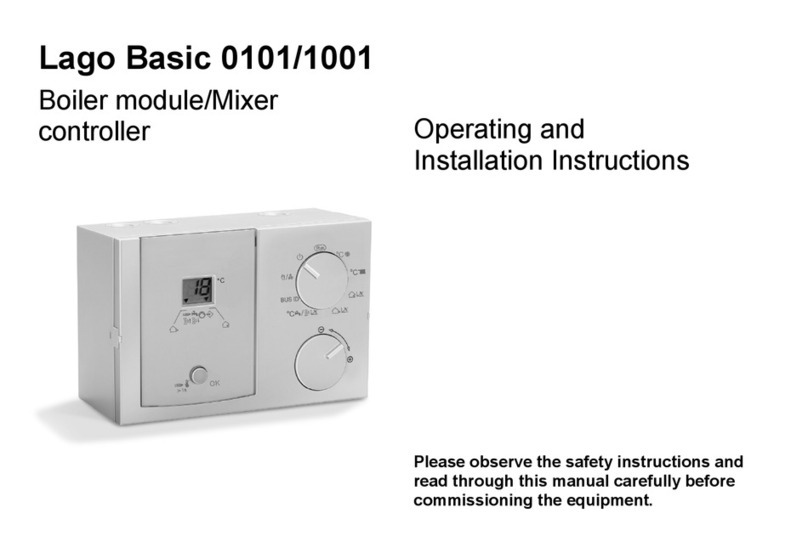
Kromschroeder
Kromschroeder Lago Basic 0101/1001 Operating and installation instructions
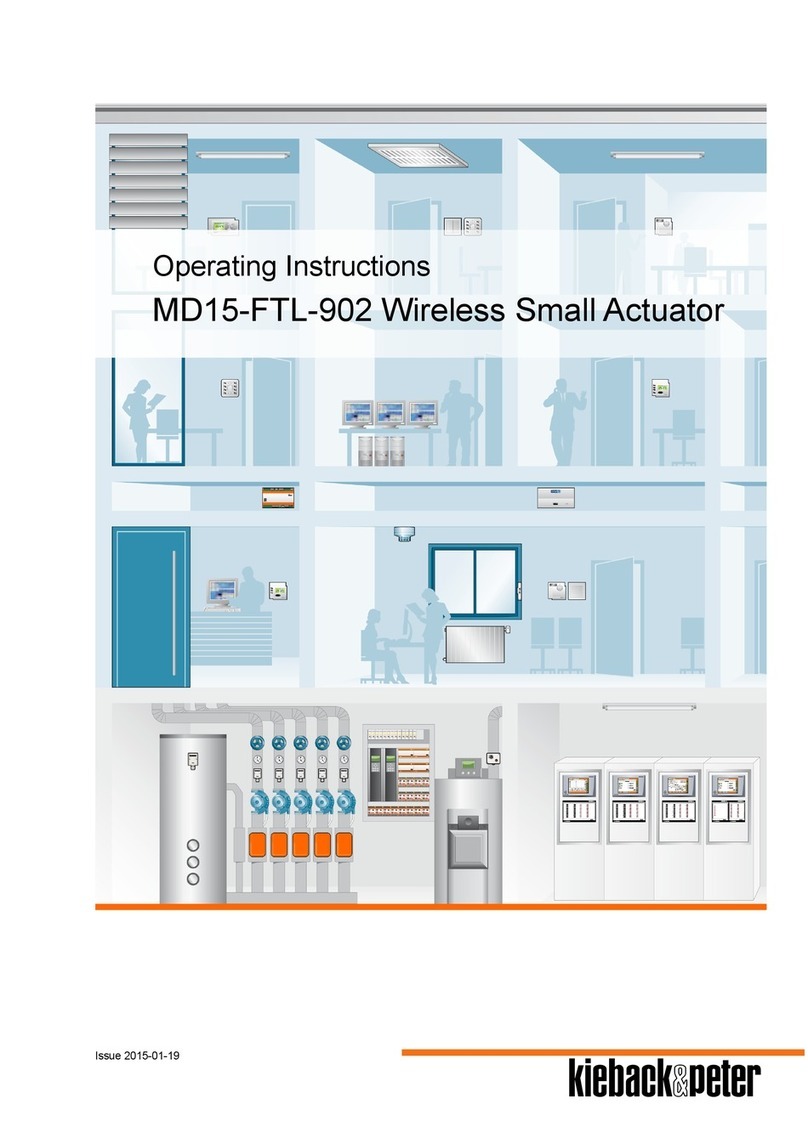
Kieback&Peter
Kieback&Peter MD15-FTL-902 operating instructions

Show Tec
Show Tec showdesigner 512 user manual
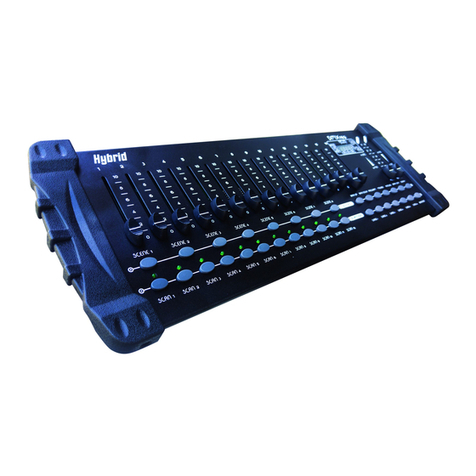
Hybrid+
Hybrid+ DMX-200 Series user manual
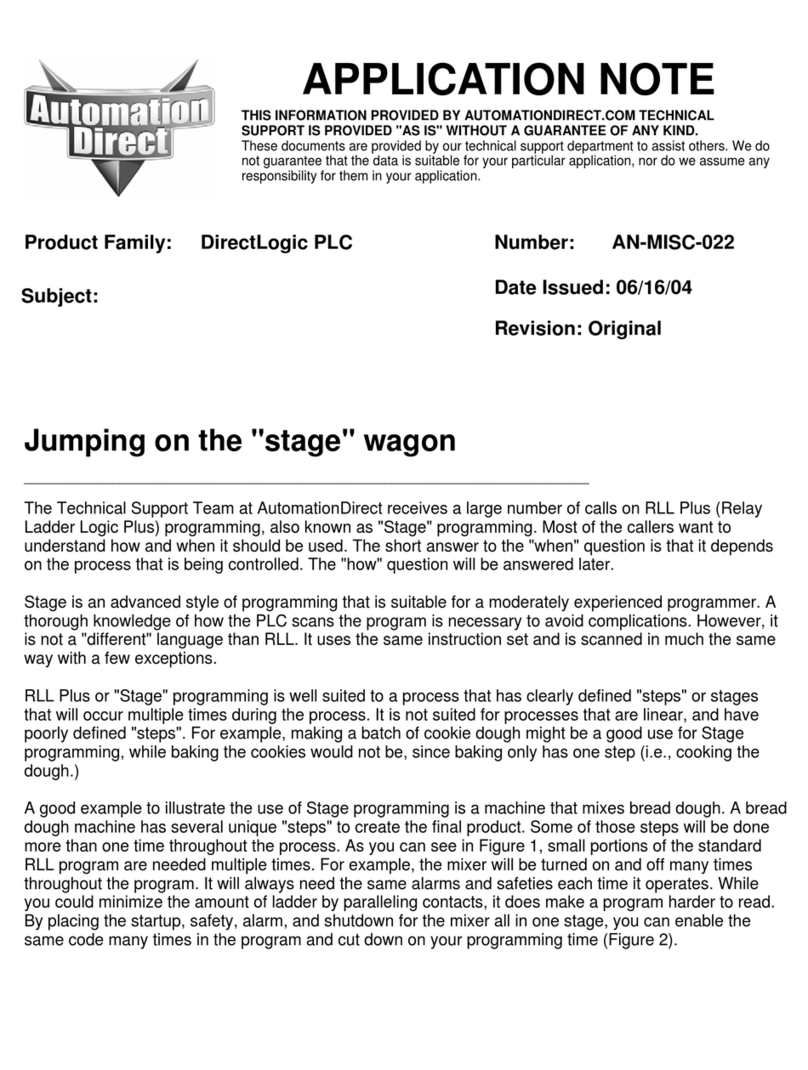
AutomationDirect
AutomationDirect DirectLogic Series Application note
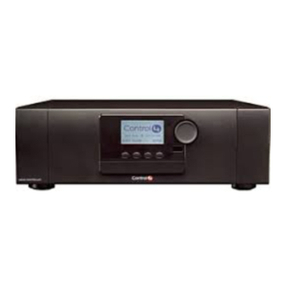
Contro l4
Contro l4 AVM-MC1-B Installation and user guide
